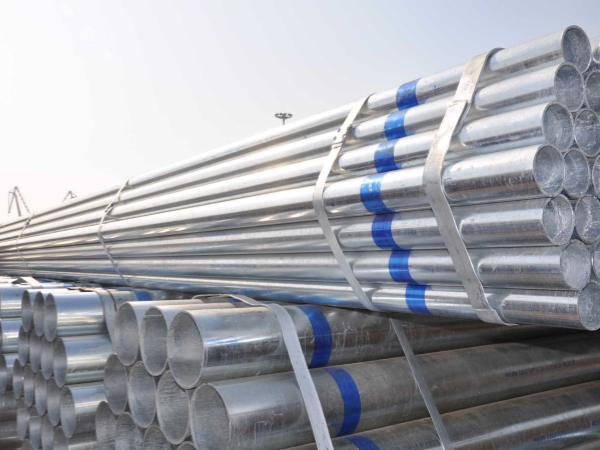Welding galvanized steel pipes involves some specific considerations and processes due to the zinc coating on the steel. Here are the key welding characteristics and the process of welding galvanized steel pipes:

Welding Characteristics of Galvanized Steel Pipe:
- Zinc Evaporation: One of the primary challenges when welding galvanized steel is the potential for zinc evaporation. As the steel heats up during welding, the zinc coating can vaporize, leading to fumes that may be hazardous to the welder. Proper ventilation and personal protective equipment (PPE) are essential to prevent exposure to zinc fumes.
- Porosity: The presence of zinc on the surface of the steel can lead to increased porosity in the weld. Porosity occurs when gas pockets are trapped in the weld bead, resulting in weak points. To mitigate porosity, it's important to use the right welding techniques and settings.
- Burn-Off: Welding galvanized steel can cause some of the zinc coating to burn off, leaving the area around the weld susceptible to corrosion. This can be addressed by post-weld treatments, such as applying zinc-rich paint or coatings.
Welding Process of Galvanized Steel Pipe:
- Surface Preparation: Before welding, it's crucial to prepare the surface of the galvanized steel. This involves removing any visible dirt, oil, or grease. A wire brush or abrasive pad can be used for this purpose. Additionally, the welder should grind away any areas of heavy zinc buildup or spatter, as welding over such areas can be challenging.
- Welding Technique: Several welding methods can be used for galvanized steel, including shielded metal arc welding (SMAW), gas metal arc welding (GMAW), and gas tungsten arc welding (GTAW). The specific technique chosen depends on factors like the thickness of the steel and the desired weld quality. SMAW is often used for thicker galvanized pipes, while GMAW and GTAW are suitable for thinner materials.
- Proper Ventilation: Adequate ventilation is crucial when welding galvanized steel to remove zinc fumes. Welders should work in well-ventilated areas or use exhaust systems to direct fumes away from their breathing zone. The use of respiratory protection, such as a respirator, may also be necessary.
- Welding Parameters: Welding parameters, such as voltage, current, and wire or electrode type, must be adjusted to account for the presence of the zinc coating. These settings will vary based on the welding process being used and the specific requirements of the project.
- Post-Weld Treatment: After welding, it's advisable to address the areas where the zinc coating may have burned off. This can be done by applying zinc-rich paints or coatings to the welded areas. The application of such coatings helps to protect the steel from corrosion.
- Quality Control: Inspect the welds to ensure they meet the required quality standards. This includes checking for any defects like porosity, inclusions, or cracks. Proper quality control is essential to ensure the integrity of the weld and the long-term performance of the galvanized steel pipe.
In summary, welding galvanized steel pipes requires careful consideration of the characteristics of the material, including the potential for zinc evaporation, porosity, and the need for proper surface preparation and post-weld treatments. By following the appropriate welding process and safety precautions, you can achieve strong and corrosion-resistant welds on galvanized steel pipes.